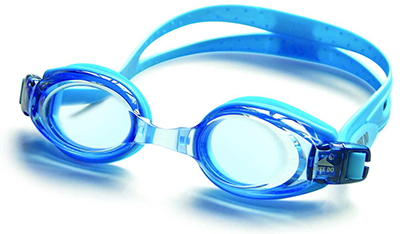Choosing the right swimming goggles.
1. The fit:
Decided by the seal of the goggles (not the strap). Try your goggles on before you buy them.
When you try them on, without putting on the strap, the seal should provide a split second of suction – anything less and they will let in water, anything more and they are too tight and applying two much pressure.
Be careful to check the goggles are not too wide either as they may leak.
Competition style of goggles tend to be less adjustable so there is even more reason to find the right fit.
2. The comfort:
Many goggles have adjustable nosepieces so try them if they are rubbing or two wide across the bridge of your nose.
The strap is imperative for holding goggles in place. Having them too tight will add pressure to the eye.
Many goggles now have split straps which are better at holding them in place.
3. The sight:
Nearly all goggles now come with an anti-fog coating and UV protection. If they don't, don't buy them.
The final thing to consider is the colour of the lens.
The six most common are described below:
- Clear – designed for lowlight when maximum visibility is required. Suited to indoor use.
- Lilac – designed for the best contrast for objects. Suited to indoor or outdoor use.
- Smoke – designed to reduce light over all brightness. Best suited to outdoor swimming – perfect in the sun.
- Amber – designed to enhance vision in low light levels and reduce glare. Suited to indoor or outdoor use.
- Blue – designed to allow a moderate level of light into the eye but maintain protection from glare and bright conditions. Suited to indoor or outdoor use.
- Mirror – designed to reduce brightness and glare. Suited to outdoor use.
Remember, your children could be wearing these goggles for several hours a week. Badly fitting goggles can be uncomfortable and a distraction to both the swimmer and the coaches.
The expensive pairs are not always the best, it's about finding what is comfortable for your child and goggles do you get lost!

Did you know?
It has been claimed that goggles have revolutionized the sport of competitive swimming more than any other advancement in the sport. Ever!!
It wasn’t until 1968 that the first commercial swim goggles were available!
These first goggles were initially considered training aids, and therefore were not allowed in competition. FINA quickly changed that rule and by 1970 they were allowed in competitions.
David Wilkie became that first person to wear them in international competition and by the 1972 Olympics goggles had become standard equipment for virtually every serious swimmer.‘
